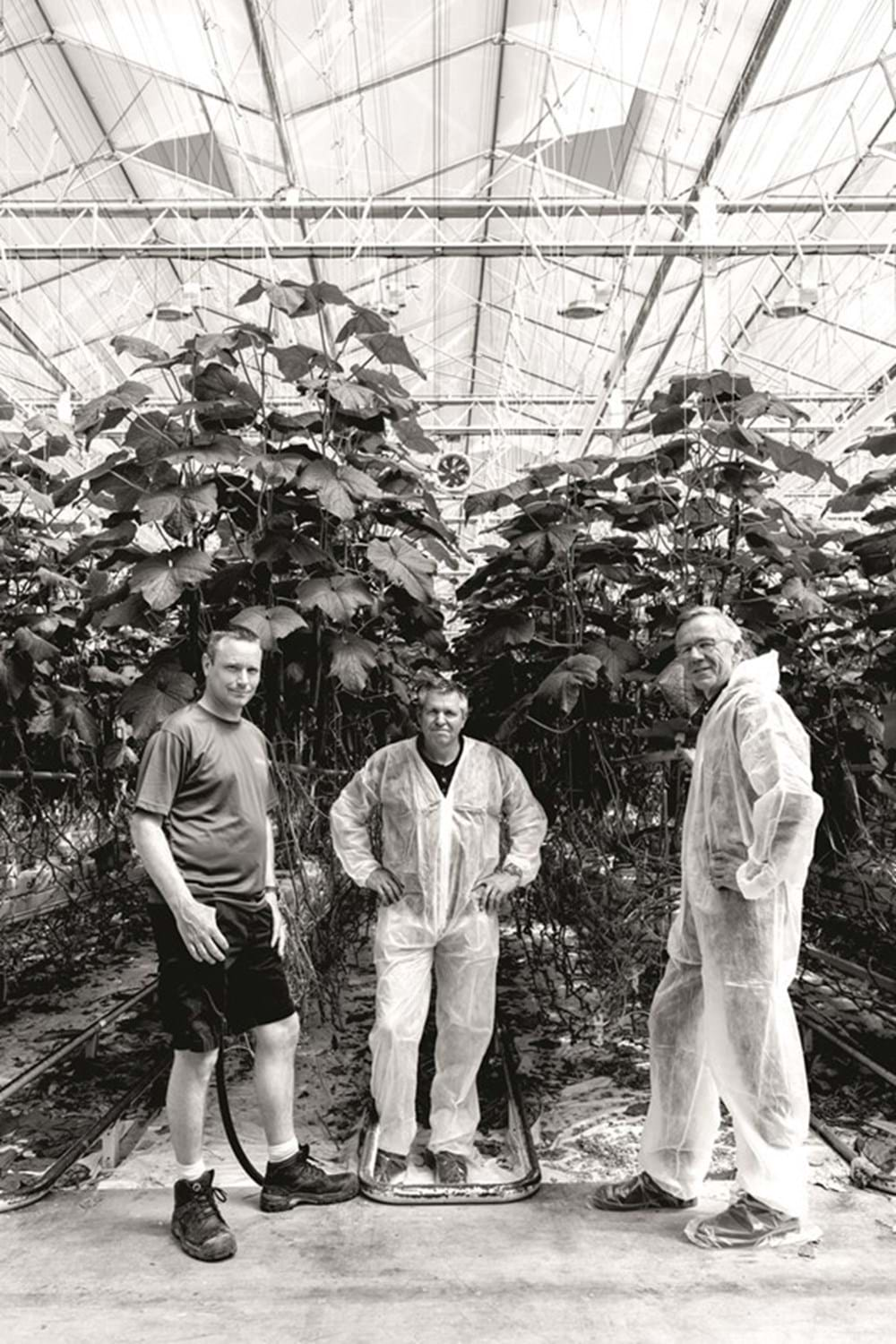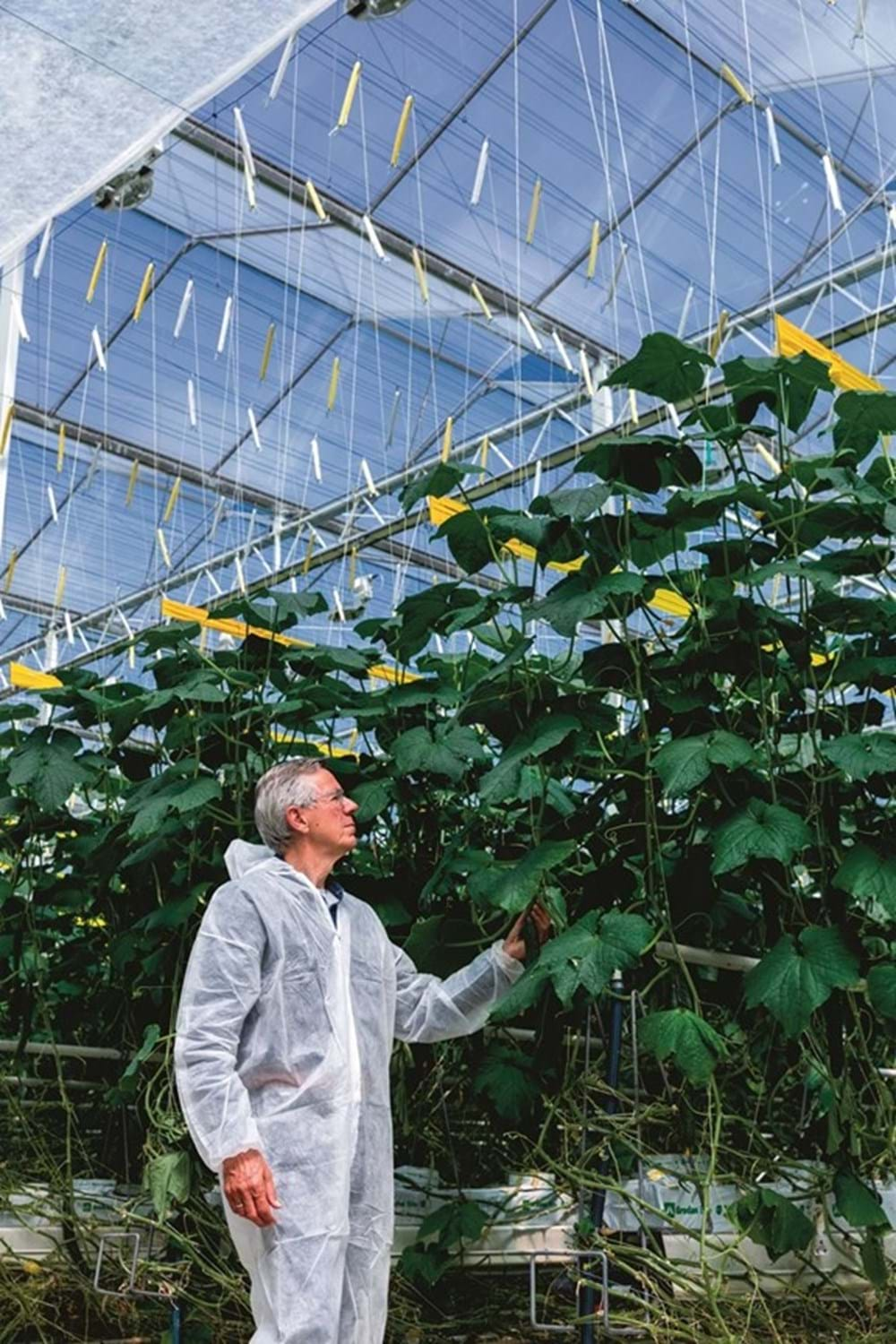Two years ago, one of the greenhouses at The Valley in De Lier switched from tomato to high-wire cucumber cultivation. At the same time, the entrepreneurs stopped using full lighting. In order to maintain a sufficient temperature in the greenhouse and also to save energy, they invested in a second screen at the beginning of this year; the Luxous 1147 FR screen from Svensson. When making this decision, the high light transmission of this energy screen was imperative.
'The Valley' is a relatively new name in the fruit and vegetable world. The company was created at the beginning of 2023 from a merger between four companies: Kwekerij Greenway, Kwekerij GreenValley, Voort Tomaten and Kwekerij Van den Berg. The new company has seven locations, mainly in Westland, and has a total area of approximately fifty hectares. Sales are via Growers United. “Six locations are reserved for the cultivation of various types of tomatoes, and we grow cucumbers at one location. And perhaps other fruit and vegetables will be added in the future,” says Jack Groenewegen. He is one of the company's four directors. Until the beginning of this year, he was the owner of Kwekerij Greenway and co-shareholder of Kwekerij GreenValley. After the merger, the entrepreneurs wanted to prepare their companies for the future. “A robust board - which now consists of four people - offers the opportunity to specialize. And that is a big advantage, since as a grower you have to be at home in many markets these days. That is no longer manageable on your own so it is good that we can now divide the tasks.”
A need for temperature control
The cucumber location of The Valley in De Lier has a special story. Initially, tomatoes were grown in this greenhouse, which was built in 2019 and was then part of Kwekerij GreenValley. "However, due a virus, we decided after about a year and a half to switch to the cultivation of high-wire cucumbers," says Groenewegen. “With this switch we also stopped using full lighting; that is less common in cucumber. However, in the first few months of the year, we sometimes increasing lighting for a few hours of the day, depending on product and electricity prices.” The grower noticed that the temperature in the greenhouse dropped considerably as a result of the loss of lighting heat. “That was not desirable from a cultivation point of view and it also required more energy. That is why we decided last autumn to invest in a second screen. In addition, it is important to focus on energy savings as much as possible, since fossil fuel energy will be taxed more heavily from 2025 onwards.
An Obscura FR screen from Svensson was already installed in the greenhouse to limit light emissions.” The second screen was a Luxous 1147 FR screen, also designed by Svensson. The high light transmission of this energy screen was the perfect choice, says the entrepreneur. “Although we wanted more temperature control in the greenhouse, we also wanted to sacrifice as little production as possible. Therefore, high light transmission was crucial for us. And the Luxous 1147 FR screen is the market leader in this regard”.
An Obscura FR screen from Svensson was already installed in the greenhouse to limit light emissions.” The second screen was a Luxous 1147 FR screen, also designed by Svensson. The high light transmission of this energy screen was the perfect choice, says the entrepreneur. “Although we wanted more temperature control in the greenhouse, we also wanted to sacrifice as little production as possible. Therefore, high light transmission was crucial for us. And the Luxous 1147 FR screen is the market leader in this regard”.
15 to 20 percent less gas consumption
The energy screen was installed in mid-January, just after the start of the new crop cycle. Both screens are kept closed at night, and during the day only the energy screen is closed. “At least, when it's cold. As it gets warmer, we open the screen during the morning,” says Groenewegen. Bjorn van Wingerden, who is responsible for cultivation at the location in question, clearly noticed in recent months that the heat retained better in the greenhouse thanks to the screen. “Last year we usually opened the light emission screen around 7:30 am; otherwise the employees would have insufficient visibility. However, this resulted in an average temperature drop of three degrees. Now we keep the energy screen closed, at least until the morning. Then when we open this up, there is already sufficient radiation from outside and it is no longer cold. This benefits crop growth and we also save energy. I estimate that because of the second screen, we were able to save about 15 to 20 percent on our gas use during the winter months.” According to location manager, Leendert Vaandrager, the head temperature of the crop is also higher on average, which benefits plant growth. However, according to him, it is difficult to determine whether this is specifically due to the second screen. “The fact that we do some lighting in the first months of the year probably also contributes to this. This is difficult to pull apart.” Although the screen is permeable to moisture, according to Vaandrager, gaps are still a must. “At a certain moment you have so much crop, then you simply can no longer control the moisture. Especially at times when the lights are also switched on.”

"I am convinced that two screens will become the standard"

Adding value to the bottom line
Groenewegen cannot yet say whether the loss of light through the second screen will actually result in lower production and if so, how much exactly. “Of course we had a dark spring this year, so that is not representative. But how the production will develop - that is still exciting. But I am confident that it will not go down too much. In addition: without a screen we would also have lost production due to lower temperatures. We also had to use more energy. This Luxous 1147 FR screen definitely provides added value: we have higher temperatures, a maximum amount of light and save on energy.” Vaandrager and Van Wingerden endorse this. “In addition, we also use the screen in spring and summer to screen out light, to prevent combustion. There is an extra profit point there”, says Bjorn van Wingerden. Because of the positive experiences, Jack Groenewegen is considering investing in a second screen at the four Valley locations as well. “And then the Luxous 1147 FR screen is definitely in the race. I am convinced that two climate screens will eventually become the standard, especially with the upcoming increase in energy taxes.”
Interested in learning more?
Contact a Svensson Climate Expert.